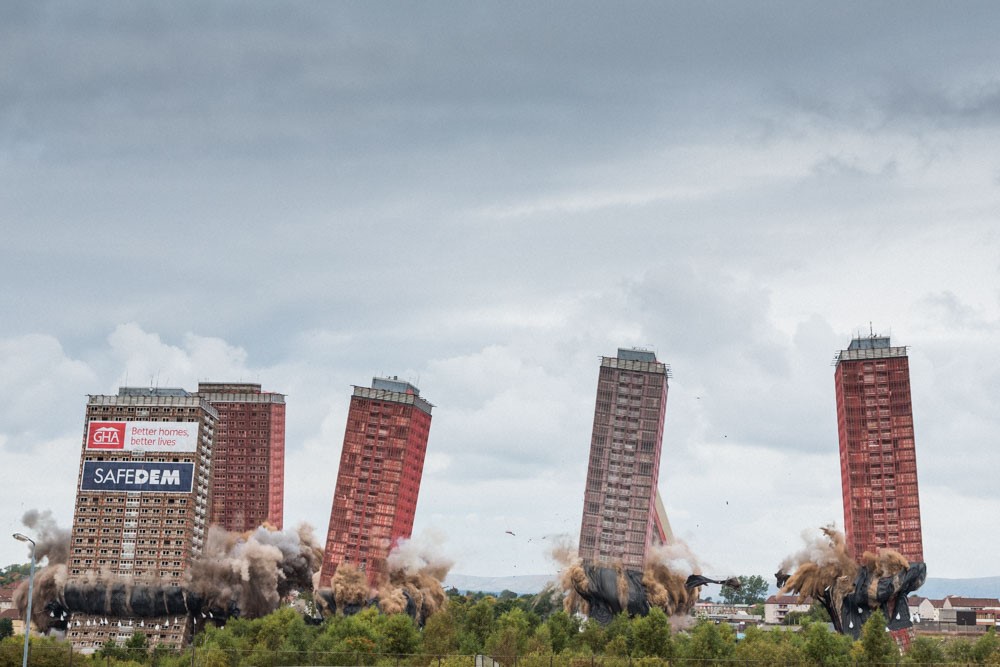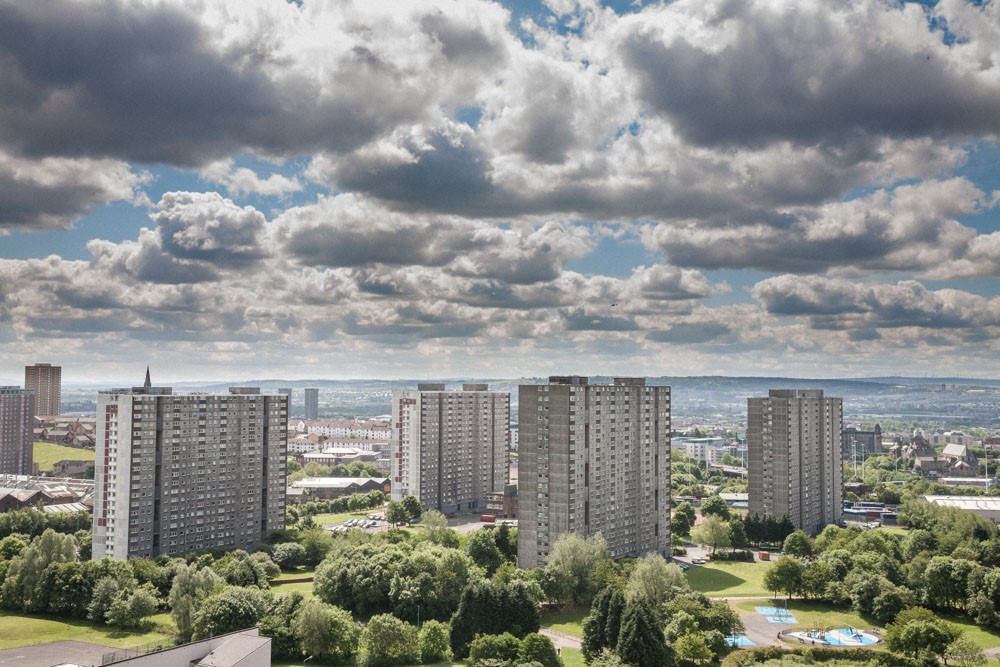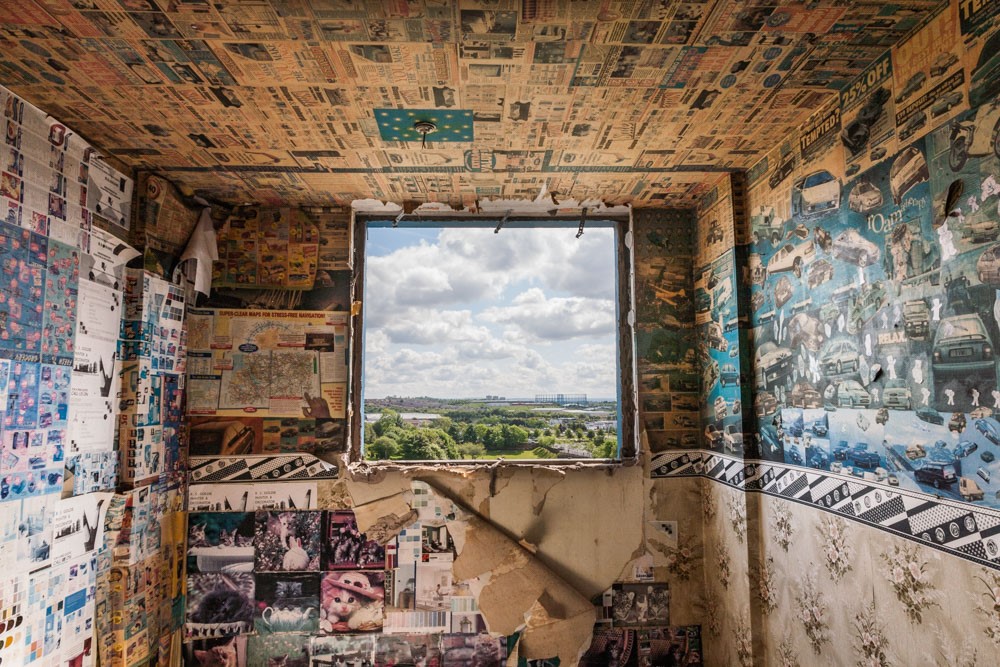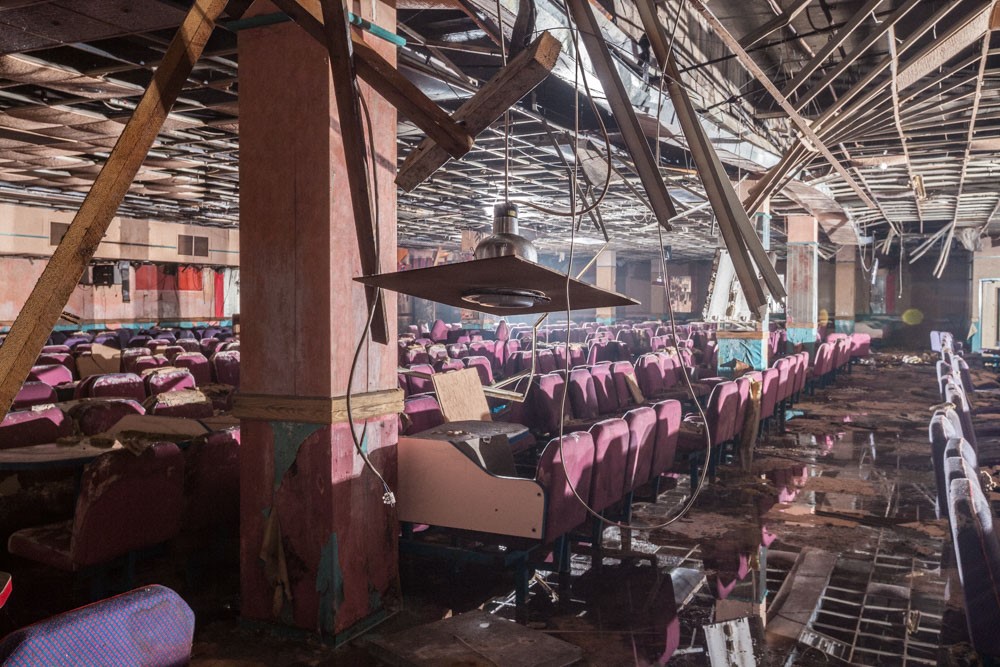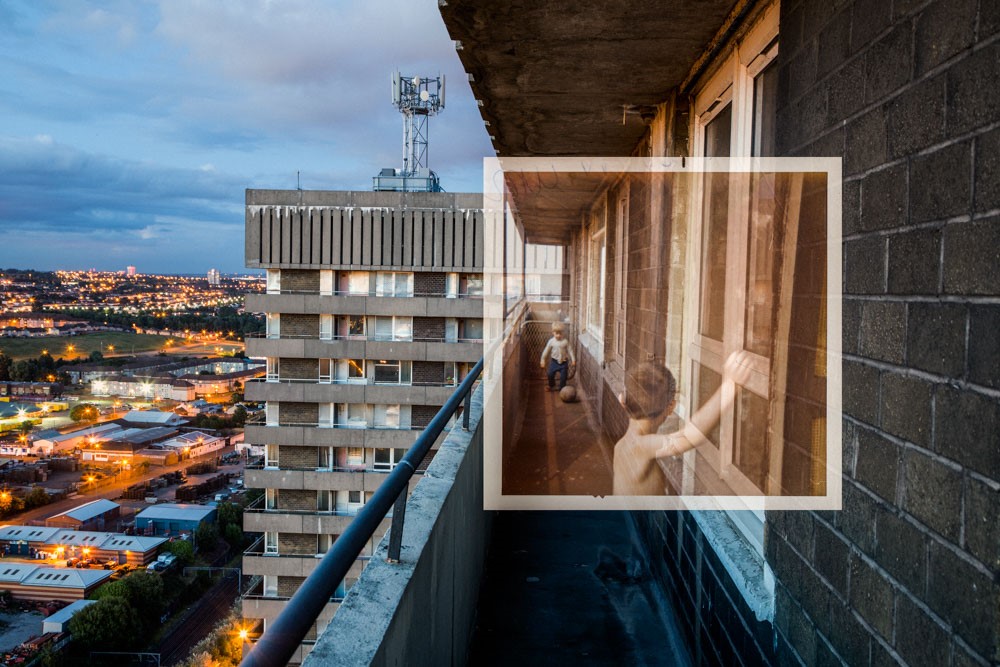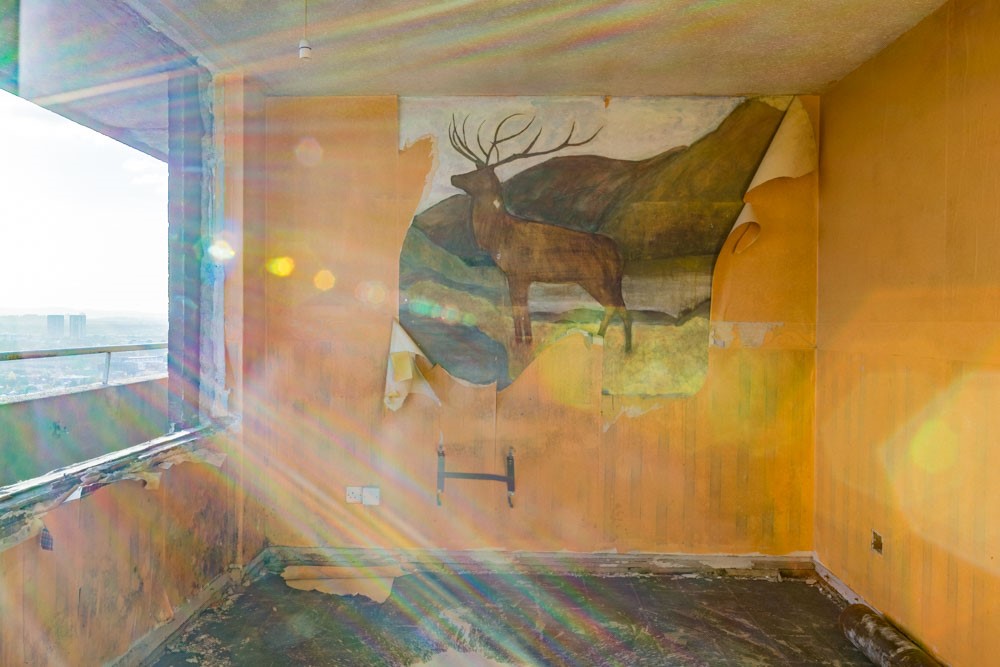Award-winning Glaswegian photographer and filmmaker Chris Leslie embarked on a project to document the changing face of Glasgow in 2014, capturing a city in the throes of another transformation, like that which led to the creation of the Scottish New Towns 70 years ago – but what might this mean for the city’s people? Here he shares an outline of the project and some of the incredible images he caught in preparing Disappearing Glasgow, which he’ll be discussing at ReimagiNation: Cumbernauld.
Glasgow in Flux
“The skyline of Glasgow is set to be radically transformed, as swathes of high-rise tower blocks make way for thousands of new homes across the city. Glasgow is enjoying a real renaissance. We’re delivering on better housing and we have regained our sense of ambition. This is an announcement that looks to the future and we are determined we will not repeat the mistakes of the past” – Glasgow City Council, 2006
Since 2006 over 30% of Glasgow’s tower blocks have been demolished. Entire communities have disappeared as Glasgow embarks on its latest orgy of demolition, a ‘solution’ that has been so prevalent in the city’s history.
Glaswegians have grown so familiar with mass demolition and subsequent regeneration to change, reinvent and market the city. They can perhaps be forgiven for not noticing, or even caring about the fundamental changes that have taken place in just a short period of 8 years. If you blinked you really could have missed it.
In the previous round of mass demolition in the 1960s and 70s, tens of thousands of Glaswegians were decanted from slums into new schemes and high-rise flat developments. These new homes, many of them high rise flats, represented a utopian vision for social housing – complete with kitchen and indoor bathroom, central heating and mixer taps, they were presented as the solution to some of the worst slum conditions in Europe at that time.
By the turn of the 21st century the solution had become the problem. The humble wrecking ball was replaced with multi million pound demolition contracts, explosives developed by NASA, secured exclusion zones and demolition spectacles that all the community are invited to watch. But the simple ethos of “knock-em-down and build-em-back-up-again” remains the same.
This latest frenzy of demolition can be attributed to the labeling of these areas as ‘Sink Estates’, with commentators and local authorities citing high levels of drug use and crime, and buildings unfit for habitation. It is presented as being easier and more cost effective to sweep away the problems along with the buildings. Thus councillors, officials and the media celebrate the death of high-rise as progress – to the extent that Glasgow’s City Father endorsed a scheme to blow up the Red Road Flats as part of the Opening Ceremony of the 2014 Commonwealth Games, a live TV spectacle for the enjoyment of millions.
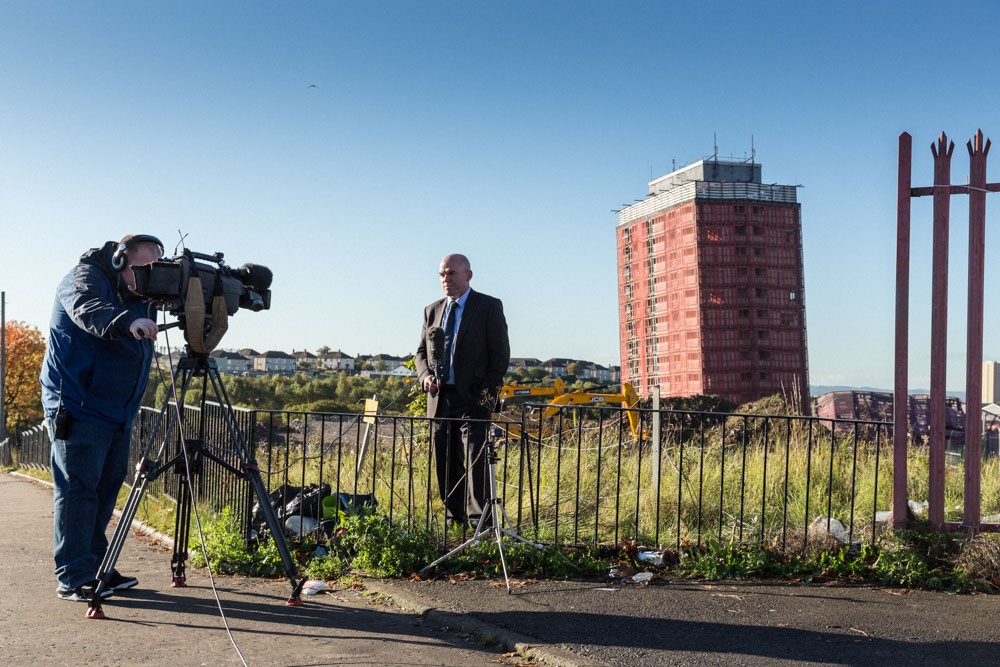
Its not just high-rise flats that are disappearing in the name of progress. In areas far outside the leafy west end, demolition of the city’s grand Victorian and Edwardian tenements has continued, often with little comment or protest. Derelict and forgotten for 30 years, Dalmarnock was to be saved by the 2014 Commonwealth Games. The last remnants of old Dalmarnock’s tenements were razed to the ground, and with them homes and businesses. Local residents are still trying to fathom the ‘legacy’ of this two week mega sporting event for them, and their area.
And what of the new-build schemes that replace the tower blocks and tenements? What happens to the communities that are scattered across the city? For many people – life in a high-rise or a ‘sink estate’ is not the way they want to live or bring up a family. They welcome their new homes with front and back gardens. But with the whole city suffering a housing shortage, and with the volume and quality of new builds decreasing, does it really make sense to destroy more homes than you build? Can we be sure we won’t live to see once again, the wholesale demolition of the houses we are building today – today’s ‘solution’ becoming tomorrow’s problem?
THE PHOTOGRAPHIC JOURNEY
In 2007 I ventured up to Red Road armed with a camera to see a mad man attempt (and fail) to walk across two of the flats on a tightrope. The last time I had come here was sometime in the early 1990s for a student party, but my memories of that time were so cloudy I was sure I had never been before. I left Red Road that afternoon with a handful of photos (mainly of a tiny dot of a man on a wire) and a strong desire to one day return.
The following year in 2008 I began studying for an MA in Documentary Photography and a final project had to be completed as part of the course. I was all set for a return trip to one of my existing haunts, somewhere really edgy and photo journalist friendly – maybe Rwanda, or Bosnia? At that very moment Glasgow won the bid to host the Commonwealth Games, and the East End, where I live, was to be ‘transformed’. Living a stone’s throw away from Dalmarnock – where all the action was to take place – I decided that perhaps Glasgow could be the edgy photojournalistic city I was looking for. After all, we had been told that everything was about to change.
And so the journey truly commenced. I wandered the desert lands of Dalmarnock as it awaited the green shoots of recovery. I revisited Red Road and delved into its underground. I photographed workmen rolling the dynamite that would exterminate the blocks at Sighthill, set up overnight time lapses in the partially demolished flats at Plean St, and jumped security fences to stalk the abandoned tenements of the Oatlands.
In the process of taking these photographs I also interviewed hundreds of former and current residents to gather their input and knowledge, their personal archives and their memories. I couldn’t have made this journey or told this story without them. What you have here is only half a project – the rest exists online as short films, photo essays and archive photography, or within my own memories and experiences.
I hope this book/project gives an insight into the city I love, that it captures the last moments and years of the condemned and disappearing schemes faithfully, and honestly. I hope it adds not just to Glasgow’s recent history, but to the ongoing debates around the ‘regeneration’ of the city and asks the questions that will ensure that we are not ‘repeating the same mistakes of the past’.
Chris Leslie is joined by Johnny Rodger of the Glasgow School of Art for an event at ReimagiNation: Cumbernauld on Saturday 20 May. Find out more and book here.
Share this Post

